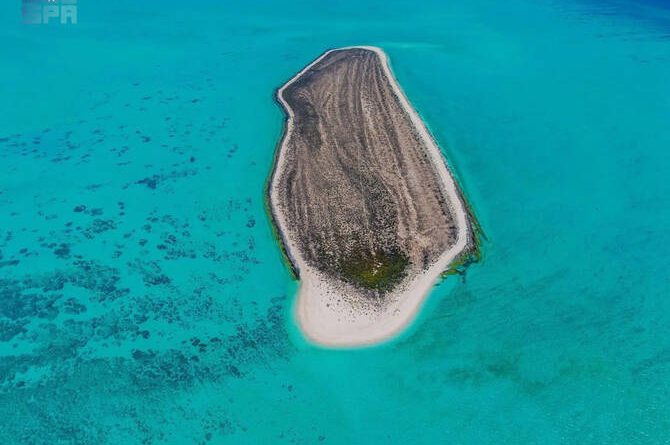Saudi Arabia’s Eastern Coast Declared Environmentally Healthy in Landmark Wildlife Study
Dammam – Saudi Arabia’s National Center for Wildlife has announced encouraging results from its first comprehensive environmental assessment of the Kingdom’s eastern coastline, confirming that the region’s marine and coastal ecosystems remain in good health.
Conducted throughout 2024 and 2025, the study reflects Saudi Arabia’s growing commitment to sustainable conservation and environmental stewardship under the Vision 2030 framework.
The large-scale assessment, carried out across more than 400 sites, examined vital marine and coastal habitats such as coral reefs, seagrass meadows, mangrove forests, and mudflats.
The project was completed in collaboration with international experts using advanced research methods, including underwater imaging, satellite remote sensing, and internationally recognized ecological evaluation techniques.
The findings revealed that coral reefs along the eastern coast maintain a healthy cover rate of around 22 percent, with minimal bleaching not exceeding 2 percent.
Scientists noted that the dominant coral species, including Porites and Merulina, exhibited strong resilience to the region’s warm temperatures and changing environmental conditions.
These results demonstrate the natural strength of Saudi Arabia’s marine biodiversity and the success of recent conservation initiatives.
Equally promising were the results for seagrass meadows, which remain stable across most surveyed areas. These meadows are critical for maintaining marine life and supporting carbon storage.
Meanwhile, mangrove forests were found to span approximately 1,573 hectares, displaying dense and healthy vegetation, especially in key areas such as Ras Tanura and Tarout Island.
Mangroves play an essential role in protecting shorelines, preventing erosion, and providing nursery grounds for fish and other marine species.
The assessment also highlighted the richness of marine fauna in the Arabian Gulf. More than 80,000 fish from 90 distinct species were observed during the study, alongside sightings of large marine animals including dugongs, dolphins, turtles, sharks, and rays.
These findings reinforce the Arabian Gulf’s importance as a critical habitat supporting regional biodiversity and sustaining vital ecosystems.
In addition to marine life, the study recorded 176,836 birds representing 69 different species, emphasizing the region’s significance as a global stopover for migratory birds.
Peak bird numbers were noted during the autumn migration season, with Dammam Corniche and Tarout Bay identified as key breeding and aggregation zones.
Researchers even documented the first recorded sighting of Franklin’s gull in Saudi Arabia, marking an exciting discovery for ornithologists and nature enthusiasts.
National Center for Wildlife CEO Mohammed Qurban emphasized that the assessment reflects Saudi Arabia’s dedication to scientific research, biodiversity preservation, and sustainable ecosystem management.
He stated that the results will serve as an important scientific reference to guide national planning and decision-making aimed at protecting the Kingdom’s natural heritage.
Qurban also highlighted that maintaining healthy coastal and marine environments contributes directly to global climate stability, food security, and economic sustainability.
He affirmed that the study’s findings align with the broader objectives of the Saudi Green Initiative, which seeks to enhance environmental conservation, expand protected areas, and promote ecological restoration throughout the country.
The positive assessment of the eastern coastal environment builds on previous studies by the NCW, including extensive research in the Red Sea and Arabian Gulf.
These initiatives demonstrate Saudi Arabia’s leadership in using data-driven methods to ensure the long-term protection of its natural ecosystems while balancing sustainable development.
The report’s conclusions mark an important step in the Kingdom’s journey toward environmental resilience. By integrating science, innovation, and policy, Saudi Arabia continues to establish itself as a regional leader in conservation and sustainable marine management.
The results from this study reaffirm that the Kingdom’s eastern coastline remains vibrant, biologically diverse, and capable of supporting both present and future generations.



